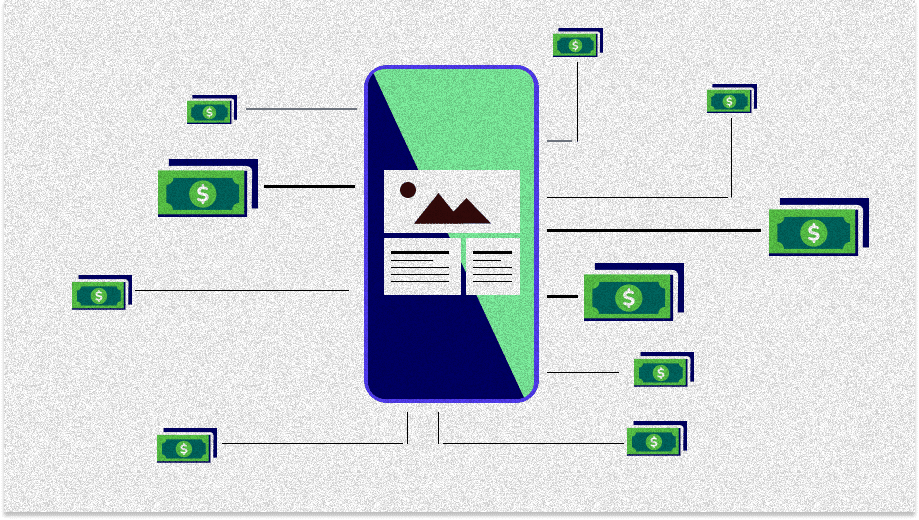Adtech can make a newcomer’s head spin. Mobile advertising — with its endless array of technical terms, jargon, and acronyms — could merit Dramamine. How does one even begin to understand this world when technologies are often marketed without any explanation of what they actually do?
Don’t worry, we got you.
Let’s start at the beginning. In short, ad mediation technology chooses which ad to show when there’s demand for one. But there’s much more to it, including — of course — plenty of acronyms. We’ll be gentle.
What is ad mediation?
Ad mediation starts with a problem: there are many ad networks, each of which offers thousands of ads. However, installing and managing multiple networks can be difficult.
The obvious, low-stress option would be to install a single network. However, doing so can leave a lot of money on the table. The good news is that a single mediation software development kit (SDK) is capable of providing access to dozens of ad networks. Depending on a publisher’s priorities — maximum revenue and expediency, or to maintain manual control — there are two main mediation options to choose from:
Waterfall mediation is essentially a priority-ordered list of ad networks. If the first network on the list doesn’t have demand to offer, the waterfall moves on to the next network on the list. If the next one doesn’t have a match either, it moves on to the next one, and so on. To squeeze as much value out of this process as possible, publishers must learn which networks offer the best revenue and order their list using calculations such as fill rate (more on that in a moment). The process is ongoing with regular updates to the list to account for changes in performance.
While auctions come in several flavors, the most performant are currently unified auctions. Unlike waterfalls, unified auctions prioritize individual ad units through in-app bidding. This fully automated bidding process allows the highest revenue ad to win even if it comes from a historically “worse” network. The result is higher revenue for the publisher and greater opportunity for advertisers to win placement in spite of past performance. In fact, according to Meta Audience Network’s Ads, IAP and beyond report, 61% of mobile game decision-makers indicated that a switch to in-app bidding for ad mediation led to an increase in ARPDAU (average revenue per daily active user). Notably, unified auctions are faster, can be enabled with a single SDK install, and can even be used in a hybrid waterfall setup.
Which mediation model is better?
There’s a little more nuance to these models than covered here. We take a deeper dive into unified auctions versus waterfalls here.
With many networks comes massive data
Any form of mediation can result in data overload. Smart publishers combine data from multiple ad networks with events and key performance indicators (KPIs) from their own game to evaluate performance, diagnose issues, and make optimizations. Publishers that choose to build their own data warehousing and analytics tools face a steep challenge.
Fortunately, third-party analytics tools have improved greatly in recent years. Custom dashboards, audience segmentation, deep integrations, predictive analytics, cost aggregation, and more have brought the data analytics market to a fantastic place. The most relevant performance metrics to monitor include:
- CPM — Cost per mille (AKA, cost per thousand impressions) is the going rate (price) for 1,000 impressions. To determine CPM, divide the total campaign cost by the total number of impressions and multiply by 1,000. For example, if a publisher earns $3,500 for every million views of its video ad, the CPM is $3.50.
- Fill rate — Fill rate is the percentage of available ad slots that get filled. To come up with fill rate, divide delivered ads by requests. For example, 1,000 ad requests leading to 750 impressions is a fill rate of 75 percent.
- LTV — Lifetime value predicts the monetary value of each player. At its most basic, LTV is the total days a player spends in a game multiplied by the revenue they account for per day. For example, if a player sticks around for 45 days while spending an average of 7 cents per day, his or her LTV is $3.15.
The key data feature publishers should look for in any mediation platform is total transparency and a complete view of inventory performance. More than half of gaming businesses (52 percent) look to their mediation partner for analytics.
Chartboost Mediation data
Chartboost Mediation, our unified auction ad mediation platform, includes a data dashboard as well as integrations with AppsFlyer, a leading analytics and attribution platform that many publishers use to consolidate their data sources.
A special note on fraud prevention
Another key issue for publishers choosing an ad mediation platform is fraud. Every ad network, big and small, deals with fraud.
Publishers play a part in stopping fraud. App-ads.txt is a text file that specifies allowed ad sources. Maintaining an updated AAT file maximizes revenue while keeping less reliable or potentially fraudulent sources locked out.
App-ads.txt explainer
We’ve covered everything you need to know about app-ads.txt, including Chartboost’s very own AAT Verifier that helps ensure everything is set up correctly.
What else should a game publisher look for in ad mediation?
Mobile game developers and publishers should start by looking for a mediation platform that specializes in mobile games. It may sound obvious, but platforms will compete for your business even if they’re not good at it.
It’s also important to consider performance, including in CTR, CPM, and fill rate. Any worthwhile mediation platform should offer excellent data transparency, as well as integrations to analytics platforms. Don’t forget to investigate its approach to fraud prevention.
Chartboost’s industry-leading ad mediation platform Chartboost Mediation checks all of the boxes. By supporting unified auction technology and hybrid waterfall models, total transparency with all the metrics publishers value, and powerful fraud prevention measures, Chartboost Mediation offers maximum revenue and optimal speed to help publishers accomplish their goals. Start learning more about your monetization options, or if you’re ready to mediate your ad networks, sign up now.



